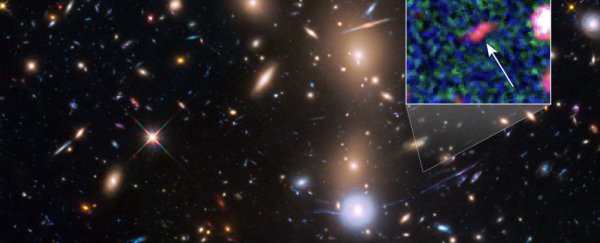Astronomers have announced the discovery of "the faintest object ever seen" in the galaxy, dating from just 400 million years after the Universe was born with the Big Bang - that's some 13.8 billion years ago, by NASA's reckoning. The researchers have nicknamed the object Tayna, which means "first-born" in Aymara, a language spoken in the Andes and Altiplano parts of South America.
The galaxy was spotted through the combined powers of NASA's Hubble and Spitzer space telescopes, both of which are helping us to explore the Universe like never before. While galaxies that are further away have been identified in the past, this sets a new standard for small and faint objects that had previously escaped detection. It should give scientists more clues about the beginnings of our Universe and how space was structured billions of years ago.
"Thanks to this detection, the team has been able to study for the first time the properties of extremely faint objects formed not long after the big bang," said one of the researchers, Leopoldo Infante.
Even with the power of Hubble and Spitzer at their disposal, the astronomers relied on a phenomenon known as gravitational lensing to finally spot Tayna. This occurs when light from a source bends around a massive structure between it and the observer, and in this case that massive structure was a galaxy cluster called MACS J0416.1-2403 (it holds a mass of around 1 million billion times that of our Sun).
As Gizmag reports, this cluster magnified the light coming from the new galaxy, making it 20 times brighter than it would be when viewed directly from Earth. The colour profile of the light it emits suggests the ancient galaxy is around 4 billion light-years away from our own Solar System.
NASA says the new object is a similar size to the Large Magellanic Cloud (LMC) - a small satellite galaxy in our own Milky Way. However, scientists believe the new galaxy is generating stars at a rate 10 times faster than the LMC: it's perhaps the growing core of what will eventually evolve into a full-sized galaxy.
The astronomers behind the discovery think there might be many other early galaxies like it waiting to be found, and that's going to be one of the main jobs for the James Webb Telescope, now in development. Scheduled to launch in 2018, the new telescope will set new standards for sensitivity and accuracy.
Details of the findings have been published in The Astrophysical Journal.
